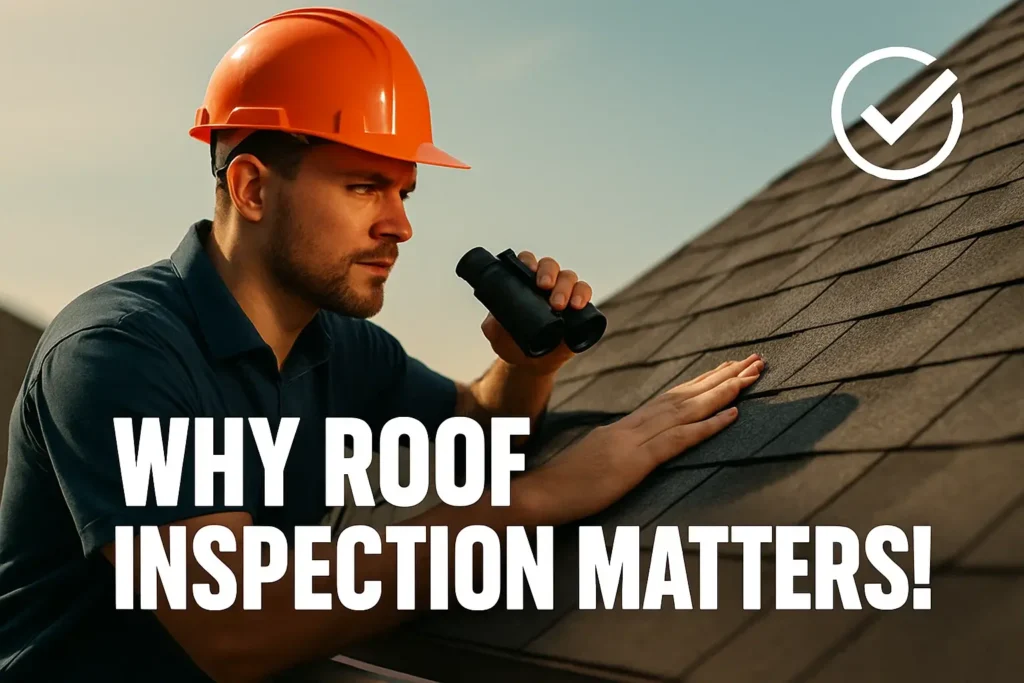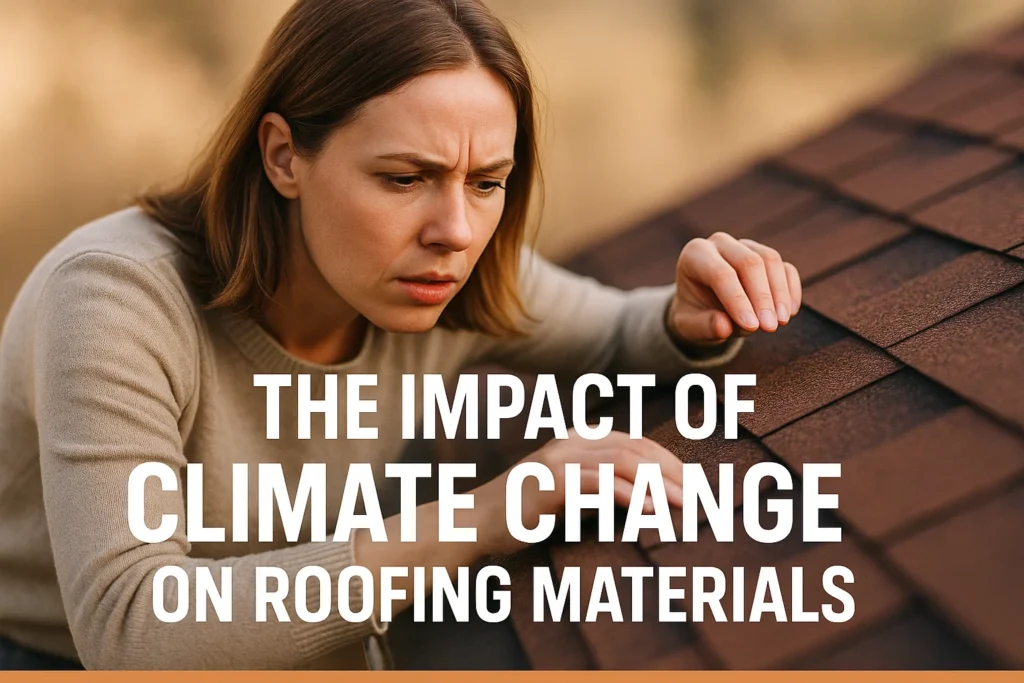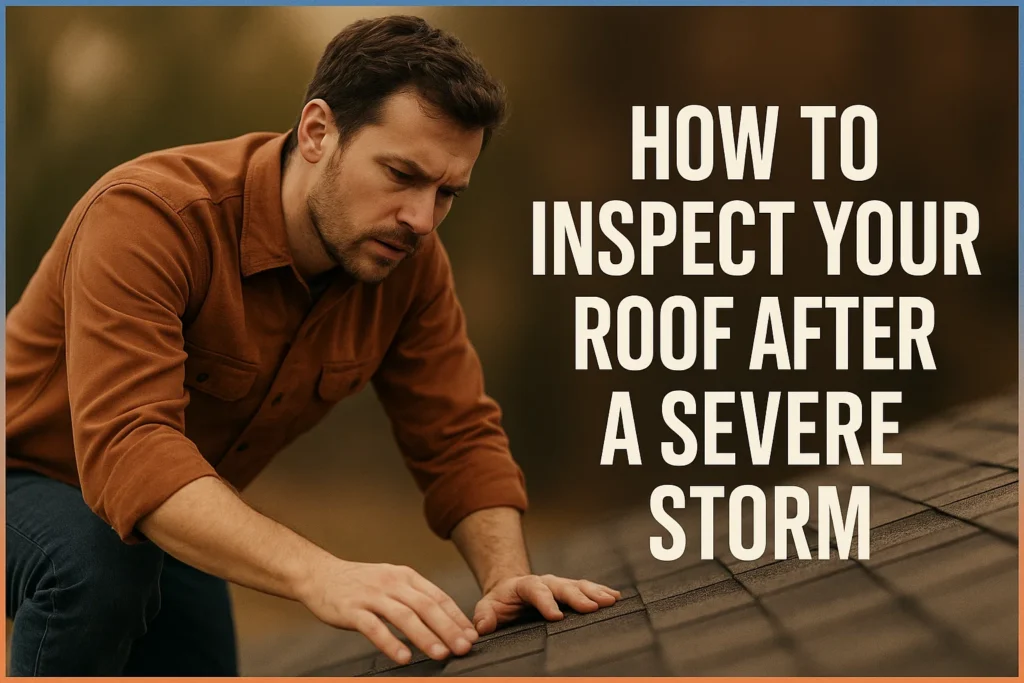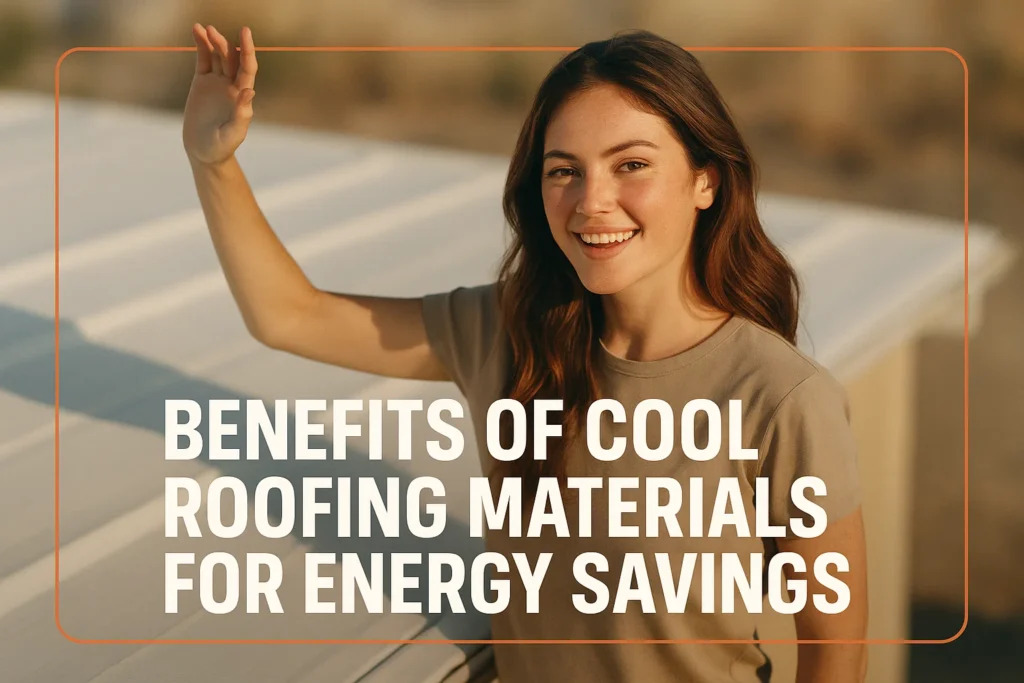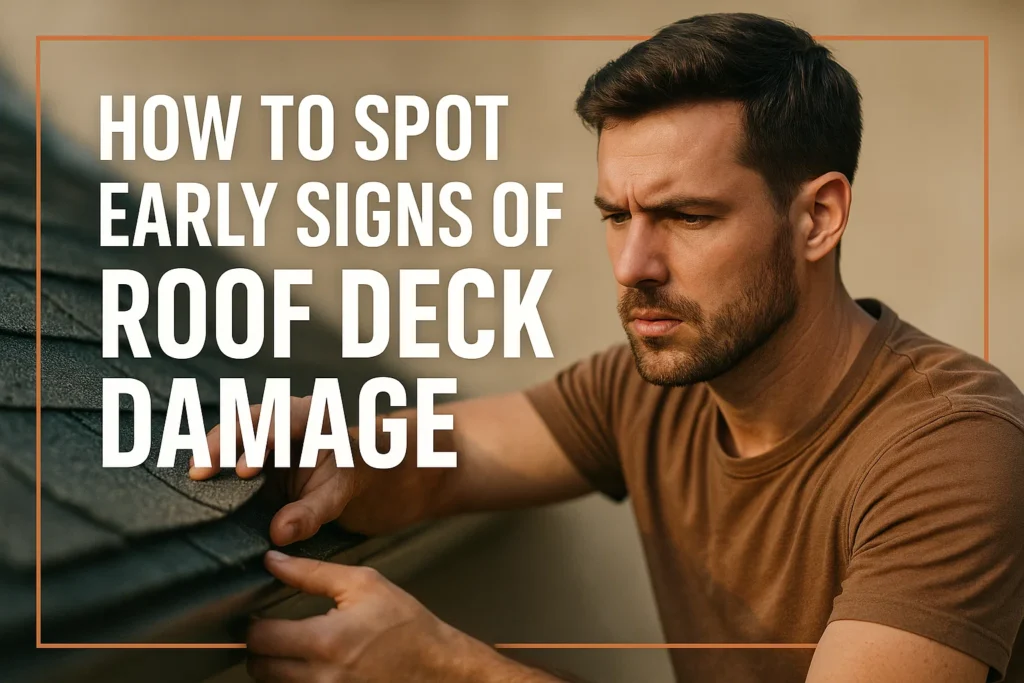When was the last time you thought about the condition of your roof? It is unlikely that you have done it at all, at least, not recently; and this is the reason that roof inspection is more often disregarded until too late. But the thing is that the problems do not disappear when you ignore your roof. As a matter of fact, it normally results in bigger, more expensive surprises. The roof inspection is one of the most intelligent preventive investments for your home or business. They are useful to alert you to any wear and tear in the early stages, to prove your warranty and insurance claims. Here, we are going to discuss the importance of roof inspection.
What Is a Roof Inspection?
A roof inspection is essentially a complete check-up of your roofing system, conducted by a professional having the appropriate training. It assists in identifying the evidence of breakages, degradation, or shoddy work, which could not be evident at ground level. This checkup aims to identify minor issues before they dramatically develop into expensive repairs-such as cracking shingles, choked drainage, or corroded flashing, amongst others.
Anyone who wants their best to ensure that the integrity, safety, and resale value of their property are maintained. Homeowners should have regular checkups, whether they have a business building or a residence. In this way, they can be guaranteed that their roof is functioning optimally, being able to withstand the weather conditions, and also be subject to any insurance or warranty.
Residential vs. Commercial Roof Inspections
The aim of roof inspection remains the same: preventing damage and extending the roof’s life. However, the method is different in the case of both residential and commercial buildings.
| Aspect | Residential Roof Inspection | Commercial Roof Inspection |
| Roof Type | Sloped (shingles, tiles, metal panels) | Flat or low-slope (TPO, EPDM, modified bitumen) |
| Purpose | Home maintenance, resale readiness, and insurance support | Lease compliance, liability reduction, asset protection |
| Inspection Focus | Surface condition, attic ventilation, and gutter system | Drainage points, HVAC units, and roof membrane integrity |
| Frequency | Twice yearly or after major weather events | Quarterly or per lease/insurance agreement |
| Common Issues Found | Leaks, shingle damage, and poor insulation | Ponding water, membrane punctures, seam splits |
| Documentation Level | Basic reports, often photo-based | Comprehensive reports with budget estimates and diagrams |
| Regulatory Requirements | Usually voluntary unless part of insurance claims | Often mandatory by lease, code, or insurer |
| Cost Range | Lower (smaller scale, simpler systems) | Higher (larger surface area, more technical inspections) |
When and How Often Should You Inspect Your Roof?
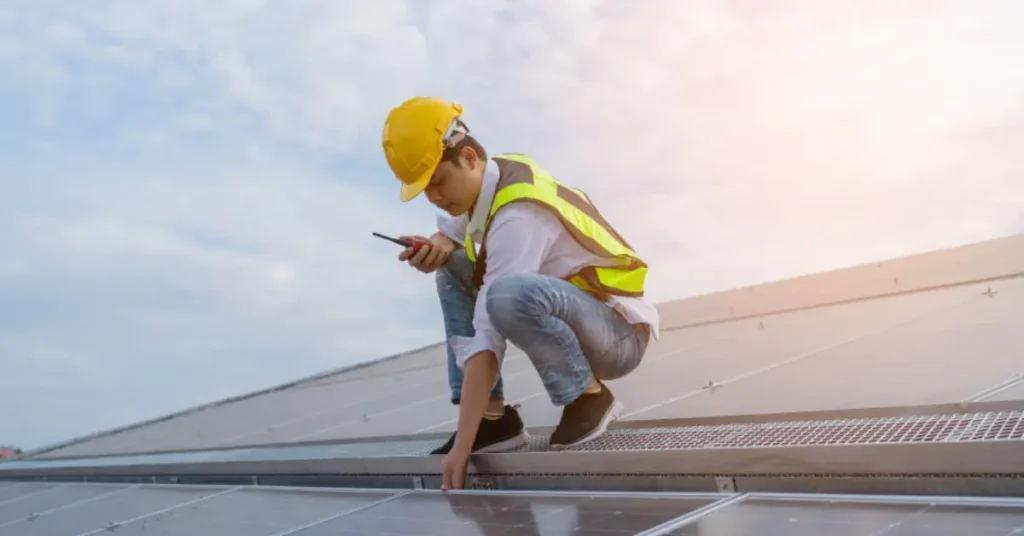
Roof checks are an important aspect of lasting property care. When to check your roof and how frequently can save you the surprise of having leaks, roof damage due to warning signs, and having to pay a huge amount of money to fix it in an emergency.
The roof professionals suggest that at least your roof be checked twice every year, usually in the spring and fall. The semiannual inspections help identify the damage that might have been done during summer or winter and have your roof ready to face the coming season.
Another thing is that after any severe weather conditions, i.e., strong storms, hail, and high-wind events, you are supposed to schedule an inspection of the roof in case it has suffered any damage. It is a fact that there can be small problems that do not seem to have caused any damage as viewed on the ground, but over time, things get out of hand.
Best Times of Year for a Roof Inspection
It is important to keep your inspection regular. Roof inspection can be done when there is a favorable season, like spring and fall. In spring, inspectors have the opportunity to evaluate any destruction caused by winter, e.g., snow, ice, or temperature changes. The roof should be prepared in the fall, ready to experience the more extreme winter weather.
Conducting inspections during mild weather also improves safety and visibility for the inspectors. Such windows enable the active maintenance of the problematic cases and the prevention of problems caused by excessive heat or severe cold.
5 Signs You Need to Have Your Roof Inspected
While not part of a normal routine, there are signs that need immediate professional attention. These include:
1. Damage to gutters, flashing and shingles
2. Water stains on ceilings or walls.
3. Sections of the roof that sag or look uneven.
4. Accumulated debris along with algae and moss which may retain moisture.
5. Unvented heating or cooling expenses are attributed to some concerns with ventilated systems.
Take note of any one symptom from the above list and it becomes essential to an inspection as unlike in the case of waiting, sooner increases the chances of preventing serious damages down the road through early intervention & elimination of long-term costs centered around repairs.
Scope Of A Roof Inspection
Property owners are likely to overlook its scope, given how far beyond just spotting missing shingles lies ensuring there is no moisture presence by looking for signs such as leaks internally/externally, roofing components damage, so you could take action alongside addressing multiple issues. Before continuing with structural adjustments, make sure all seals are maximized in utility-adjustable flexibility, ideal during windshields and storm elements, while needed structures’ tightness.
Early Detection of Issues Avoiding Major Repairs
As one of the central advantages deriving from periodic inspections, early detection enables you to locate challenges that can result in severe consequences down the line. For instance, while a cracked shingle, loose flashing, or a blocked vent may appear insignificant on their own. However, if ignored long enough, they can trigger mold growth and collapse the structure, as well as insulation failure.
Trying to resolve such issues once they have become visible is often expensive due to extensive damage. Inspections that are based on allowing for preventative measures safeguard against crises and ensure low-cost repair mechanisms.
The Role of Roof Inspections in Roof Care
In order to comprehensively care for a roof and not solely identify flaws needing correction, regular roof inspections should be conducted. Roof maintenance values are systematic evaluations that support improving the roof age, deterioration rate, alongside energy savings while ensuring proper functioning under loads.
Evaluation provides clear snapshots about where and when action is warranted, enabling precise, timed action instead of indefinite guesswork regarding worn seam closure devices, clearing out drainage systems, or replacing outdated parts.
The Benefits of Roof Inspections for Insurance Claims
Submitting an insurance claim revolves around substantiating the damages incurred, especially following a storm or accident that impacts your roof. In such cases, professional roof inspections prove invaluable. A documented inspection provides all necessary proof to the insurer that the damage was indeed recent and related to a storm, not due to long-term neglect.
In certain circumstances, insurers may accept pre-event inspection reports as evidence supporting the claim that the structure was intact before an event. Utilizing this strategy can significantly enhance the chances of attaining a fair resolution. Roof inspections minimize disengagement from unexpected damages and protect monetary investment during unforeseen circumstances while expediting claims processing and reducing conflicts.
Hiring a Specialist for Your Roofing Assessment
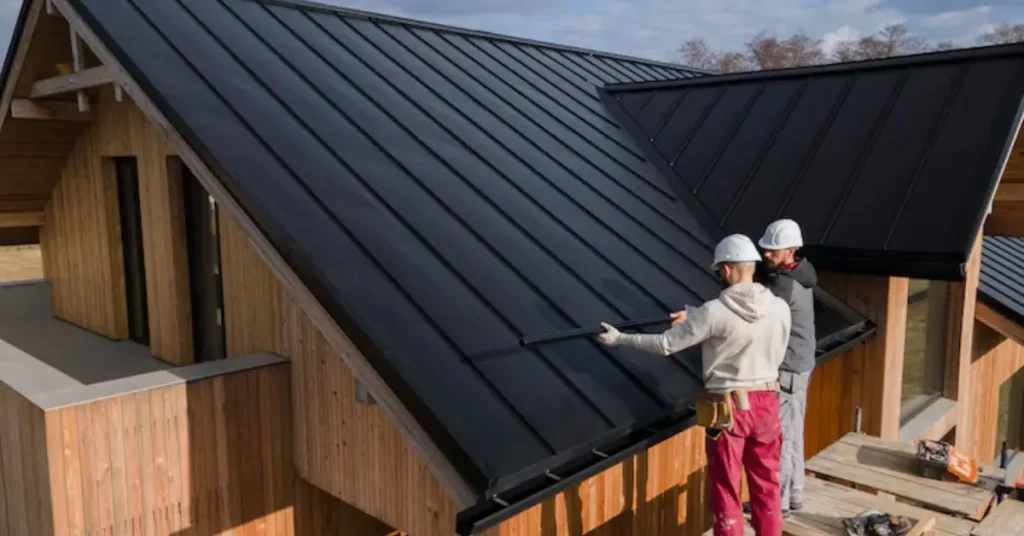
Certified specialists come with experience and the right tools, safety measures, and knowledge to recognize roofing problems that often go unnoticed by non-professionals. With formally documented assessments, inspectors report specific details that cover warranties, insurance claims, or maintenance operations needed in the future. Such documentation enhances protection while bringing peace of mind simultaneously.
What Happens During a Professional Roof Inspection
A professional roof inspection encompasses all evaluation work on both the exterior and interior of the roof. Externally, inspectors evaluate surface materials, which include flashing seals, drainage systems, and other components that exhibit wear and tear physically. Internally, keyed-up spaces like attics would also require ventilation checks alongside insulation systems measuring dampness structurally to avoid long-term issues.
Roof inspections nowadays use drones alongside thermal imaging techniques or moisture meters to detect problems, not visible with the eye. As a result, comprehensive reports capture essential specifics featuring current conditions, potential issues, and necessary actions to take.
Conclusion
A roof might not require daily inspections, but its function as a protector of your physical asset is critical. One of the easiest and most cost-effective ways to prevent expensive surprises and catch issues early on is through regular inspections. Inspections will help maintain efficient functionality while keeping the warranty or insurance intact for both residential and commercial properties. An inspection conducted proactively can save significant costs later, often in the thousands, depending on the situation.
Frequently Asked Questions (FAQs)
Schedule at least twice a year, especially during the spring and fall seasons. It also needs additional attention after severe weather events.
Obvious signs, such as debris accumulation or missing shingles, are easily detectable. However, compliance with insurance or warranty obligations requires professional assistance in detecting concealed damage.
A full inspection covers the exterior surface, flashing, drainage, attic ventilation, and any potential moisture or structural damage.


